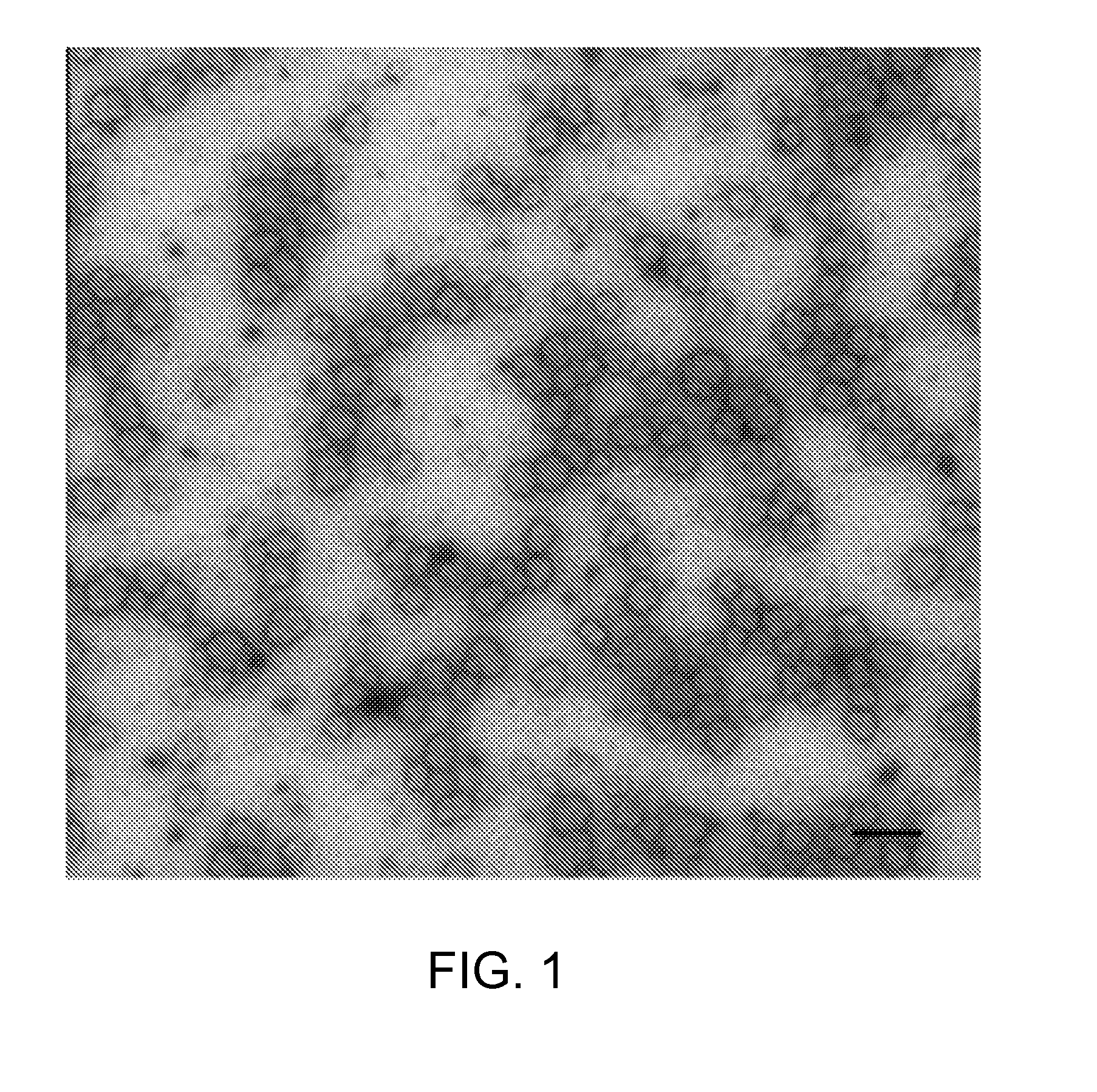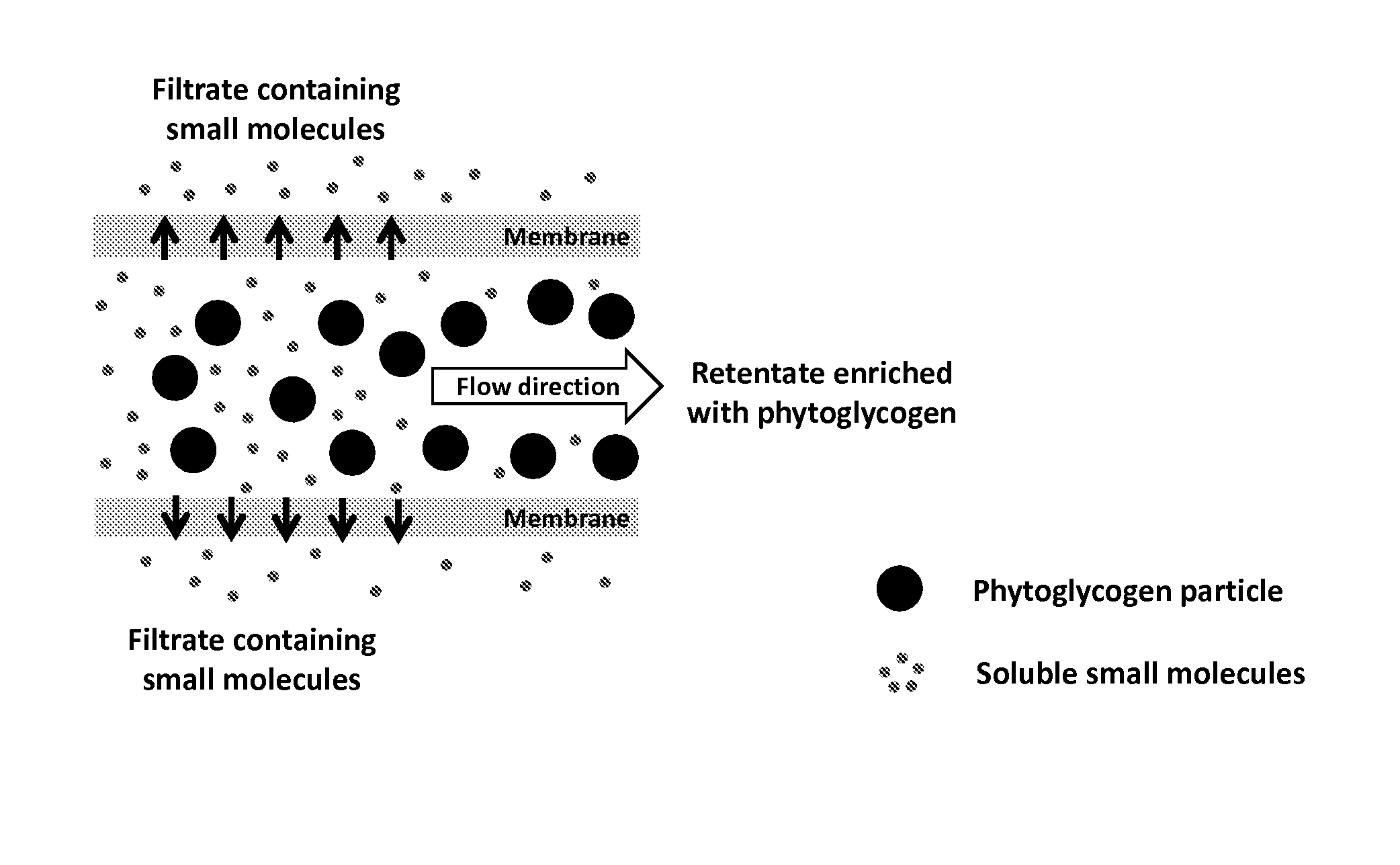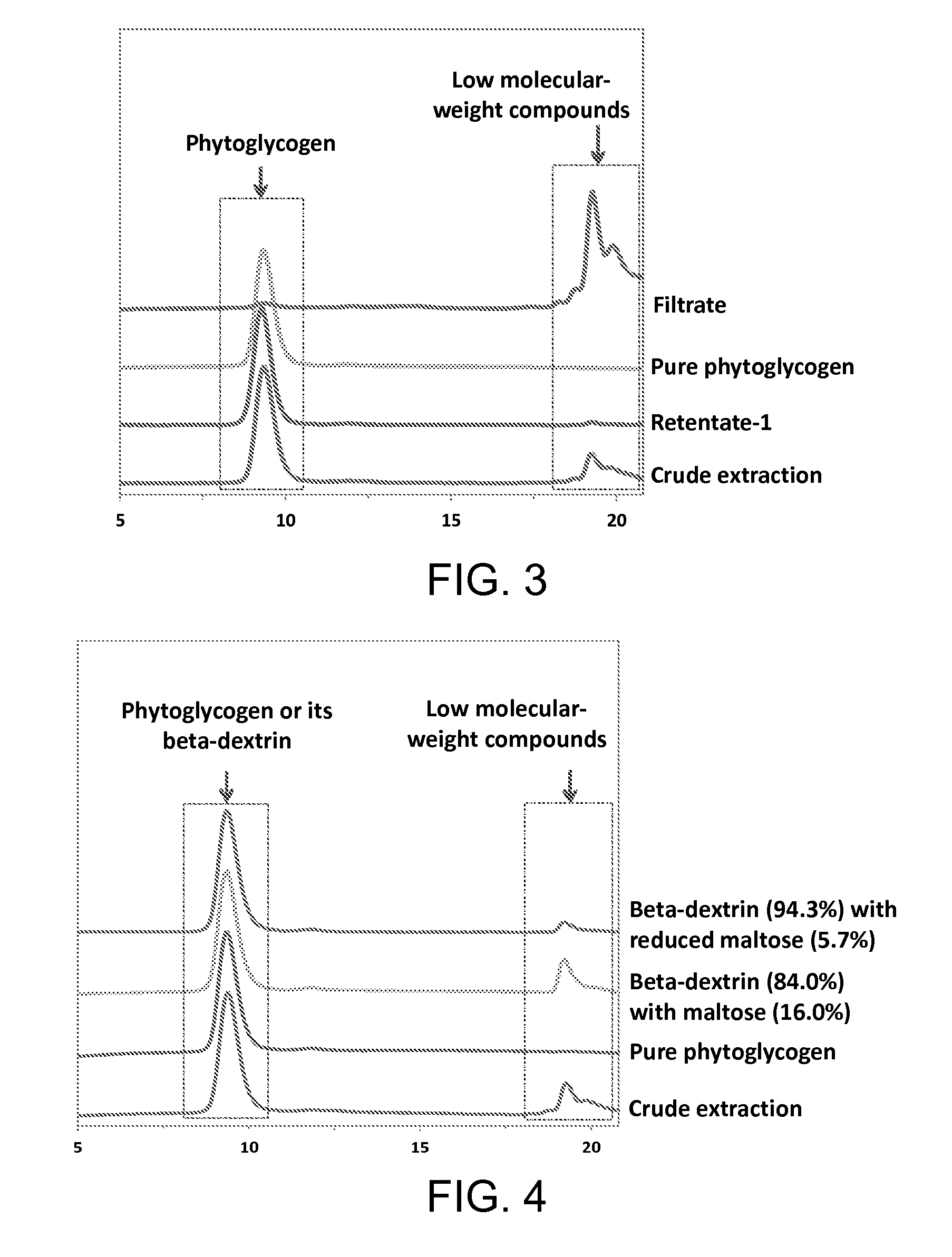Extraction, purification, and processing of phytoglycogen
a technology of phytoglycogen and extract, which is applied in the field of extracting, purifying, and processing of phytoglycogen, can solve the problems of additional cost of subsequent concentration and drying process, and achieve the effects of reducing or eliminating inconvenience and additional cost, less viscosity of phytoglycogen extract, and reducing or eliminating such inconvenience and additional cos
- Summary
- Abstract
- Description
- Claims
- Application Information
AI Technical Summary
Benefits of technology
Problems solved by technology
Method used
Image
Examples
example 1
[0075]Two hundred grams of kernels of sweet corn (Silver Queen sugary-1 (su1)) were coarsely ground and 2 L pre-cooled (4° C.) deionized water were added to the ground corn. The mixture was homogenized using a high speed blender, passed through a 270-mesh sieve, and centrifuged at 10,000×g for 20 minutes at 4° C. The solid is optionally further extracted with deionized water. The supernatant obtained was heated to 100° C. using microwave, cooled, and stored in a 4° C. refrigerator. This liquid was the crude extract of phytoglycogen (named herein “crude extract”). See Huang & Yao 2011 for additional variation in methods for obtaining crude extract.
example 2
[0076]From the stock of crude extract, 100 mL was applied to a tangential flow ultrafiltration system (Minimate TFF system, Pall Life Science). The processing conditions were: membrane (polyethersulfone) with molecular weight cut-off (MWCO) of 300 kD, temperature 22° C., and feed pressure 10 psi. When the initial volume of feed (100 mL) was reduced to 30 mL, 30 mL deionized water was added to the retentate. Meanwhile, the resulting filtrate was collected in aliquots for later analysis. When the volume of retentate was again reduced to 10 mL, 20 mL deionized water was added. When the volume of retentate was once again reduced to 10 mL, 20 mL deionized water was added and an aliquot was then taken (named herein “retentate-1”). Again, when the volume of retentate was reduced to 10 mL, 20 mL water was added and the volume of retentate was reduced to about 10 mL. This retentate was collected and is in these Examples called “pure phytoglycogen”.
[0077]The crude extract, filtrate, retentate...
example 3
[0080]From the crude extract of phytoglycogen (Example 1), 500 mL was applied to the tangential flow ultrafiltration system (Minimate). The processing conditions were: membrane with MWCO of 300 kD, temperature 22° C., feed pressure 25 psi. During the recycling process, deionized water was added periodically to the feed / retentate.
[0081]Eventually, the volume of retentate was reduced to 50 mL. This retentate was collected and designated “pure phytoglycogen”.
[0082]To 30 mL of pure phytoglycogen solution (pH6.5) was added 10 μL of beta-amylase (284 U, Megazyme). The combination was mixed, and placed in a shaking water bath (50° C.) for 20 minutes. This procedure allows for a hydrolysis of phytoglycogen by beta-amylase. After incubation, the resultant mixture was heated in a boiling-water bath to denature the enzyme and thereafter cooled. The material collected was designated “beta-dextrin with maltose”, since the material collected contained two primary materials: beta-dextrin of phytog...
PUM
 Login to View More
Login to View More Abstract
Description
Claims
Application Information
 Login to View More
Login to View More - R&D
- Intellectual Property
- Life Sciences
- Materials
- Tech Scout
- Unparalleled Data Quality
- Higher Quality Content
- 60% Fewer Hallucinations
Browse by: Latest US Patents, China's latest patents, Technical Efficacy Thesaurus, Application Domain, Technology Topic, Popular Technical Reports.
© 2025 PatSnap. All rights reserved.Legal|Privacy policy|Modern Slavery Act Transparency Statement|Sitemap|About US| Contact US: help@patsnap.com



